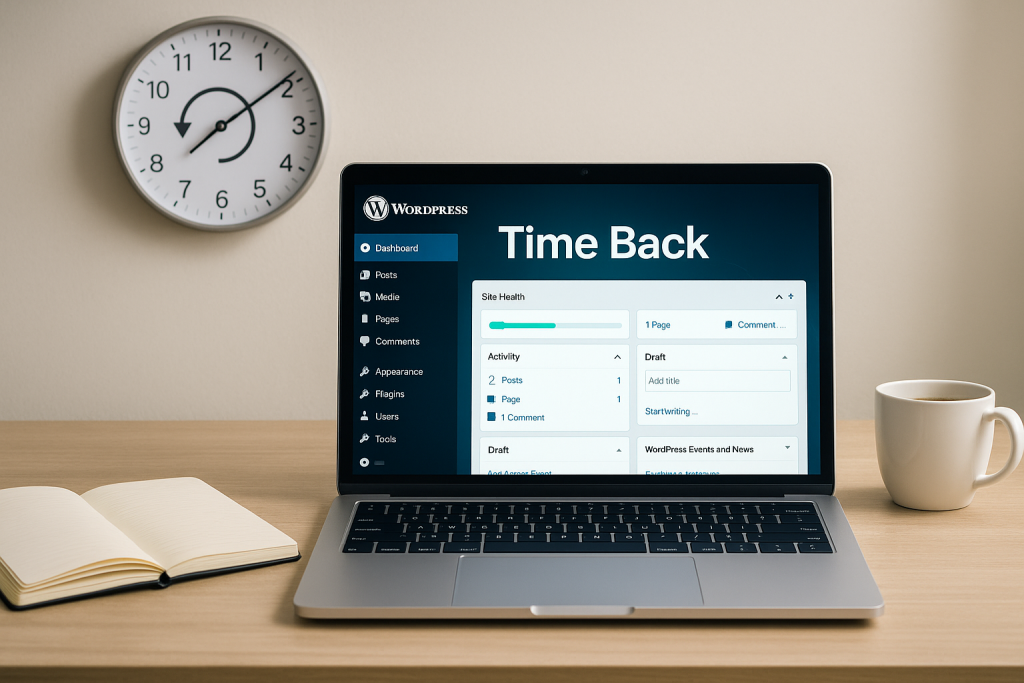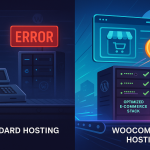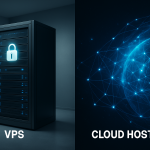The Full-Time Job You Didn’t Sign Up For: WordPress Maintenance
Every WordPress user, from the single blogger to the enterprise-level agency, eventually comes to the same realization: a website is not a static object; it is a dynamic, living, and demanding machine.
You started your website to share your art, grow your business, or build a community. You signed up to be a content creator, an entrepreneur, or a brand builder. You did not sign up to be a full-time, round-the-clock server administrator, security analyst, and performance tuner.
Yet, on a traditional or shared hosting plan, that’s exactly what you become. The endless cycle of updates, backups, security scans, and performance tweaks is what we call “WordPress Maintenance.” It’s an invisible, draining, and often thankless job that sucks up precious time you could be dedicating to growth.
This is where the true value of Managed WordPress Hosting shines. It is not just a faster server; it is a fundamental re-allocation of responsibility. It is the hosting provider saying, “You focus on your business. We will focus on keeping the machine running—and running perfectly.”
This comprehensive guide breaks down exactly how a managed hosting provider transforms the daunting task of WordPress maintenance from a full-time job into a simple, hands-off experience.
Pillar 1: The Automated Update Engine
The single most frequent maintenance task in WordPress is updating. WordPress Core, themes, and plugins all release updates constantly—for security, new features, and bug fixes. Missing an update is an open invitation for vulnerabilities, but performing them manually is a recipe for broken sites.
The Traditional Hosting Headache (DIY)
On standard shared hosting, you are responsible for:
- Monitoring: Constantly logging in to check for new update notifications.
- Backup Before Update: Manually running a full site backup before clicking the update button, just in case something breaks.
- The Update Itself: Clicking the button, praying it works.
- Verification: Thoroughly checking the front-end and back-end of the site after the update to ensure no styling, functions, or forms are broken.
- Troubleshooting: If something does break, spending hours rolling back the site from a backup and manually trying to identify the conflicting plugin or theme.
The Managed Hosting Solution (Done-For-You)
Managed hosts use sophisticated systems to automate this process while minimizing risk:
1. Automatic Core Updates
The host takes full responsibility for applying WordPress core updates (both major and minor). For minor, security-focused releases, this is often near-instantaneous. For major releases, they test the update on their infrastructure first and then roll it out to all customer sites, ensuring stability.
2. Smart Plugin & Theme Updates
Some premium hosts go beyond simple core updates. They employ “visual regression testing” or staging environments for plugin and theme updates. This means the system takes a snapshot of your live site, applies the update in a safe, isolated environment, and checks if the updated version visually broke any pages before pushing it live. If a major issue is detected, the update is delayed, and you are notified.
3. Conflict Detection
Because managed hosts only focus on WordPress, their support and platform are hyper-aware of common compatibility issues. If a specific version of a popular plugin is known to conflict with the latest WordPress core, the host will often proactively delay that specific update until a patch is available, saving you from a devastating “white screen of death.”
Pillar 2: The Fortress of Automated Security
A WordPress site is under constant attack. Maintenance is the continuous battle to keep your site a fortress. This is one area where the technical gap between a DIY user and a managed host’s security team is a monumental difference.
The Traditional Hosting Headache (DIY)
When self-managing, you are responsible for:
- Installing & Configuring Security Plugins: Finding, installing, and correctly configuring a security plugin like Wordfence or Sucuri (which can be resource-intensive).
- Malware Scanning & Removal: Running manual scans and, critically, having the technical know-how to clean up a hack yourself or pay a third-party expert for emergency cleanup.
- WAF (Web Application Firewall): Setting up your own firewall rules, which requires deep server-level knowledge.
- Brute-Force Protection: Implementing measures like failed login limits and strong password enforcement.
The Managed Hosting Solution (Done-For-You)
Managed hosting builds security into the very foundation of the server, often without the need for additional plugins.
1. Proactive, Server-Level Security (WAF and DDoS)
Managed hosts operate an Enterprise-Grade Web Application Firewall (WAF) at the network level, blocking malicious traffic before it even reaches your WordPress installation. They also provide Distributed Denial of Service (DDoS) protection, automatically mitigating overwhelming traffic spikes designed to crash your site. This is far more effective than any site-level plugin.
2. Daily Malware Scanning and Free Cleanup
The provider runs constant, automated malware scans. Crucially, if your site is somehow breached, the managed host’s expert team will clean it up for free. This is an invaluable service that can save you hundreds, if not thousands, of dollars in emergency expert fees and days of downtime.
3. Read-Only Filesystem & Limited SSH Access
Many top-tier managed hosts implement a Read-Only Filesystem for core files. This prevents malware from easily modifying or injecting malicious code into your WordPress core, theme, or plugin files, which is a primary infection vector. Code changes are only allowed through approved channels like their Git/SFTP deployment tools, significantly locking down the server.
Pillar 3: The Safety Net of Automatic Backups
A website without a reliable, tested, and external backup system is a ticking time bomb. Maintenance is not just about keeping the site running, but ensuring you can recover quickly when the inevitable happens.
The Traditional Hosting Headache (DIY)
You must:
- Install a Backup Plugin: Select, install, and pay for a premium backup plugin (e.g., UpDraftPlus, VaultPress).
- Configure Storage: Manually set up a secure, off-site storage location (like Amazon S3 or Google Drive) because storing backups on the same server is risky.
- Test Recovery: Regularly test that the backup actually works and can fully restore your site. (Most people skip this step, only to discover their backup is corrupted when they desperately need it.)
The Managed Hosting Solution (Done-For-You)
Managed hosting providers see backups as a core utility, not an add-on.
1. Daily, Automatic, Off-Site Backups
Your host automatically takes a complete backup of your site (database and files) every 24 hours (sometimes more frequently). These backups are stored off-site in secure, redundant data centers, completely separate from your live server.
2. One-Click Restore and Point-in-Time Recovery
The critical simplification is the restore process. Instead of downloading files, creating a new database, and manually importing, you simply log into your hosting dashboard, choose a date/time, and click “Restore.” The entire site is instantly rolled back to that exact state. This feature is often so fast it can save a business from hours of costly downtime.
3. Backup Retention
Most managed hosts keep 14 to 30 days of daily backups. This allows you a long window to catch a problem, like a corrupted database, and roll back to a point before the issue began, which can be a lifesaver.
Pillar 4: The Continuous Performance Optimization
Speed is maintenance. A fast website is a healthy website. On traditional hosting, speed optimization is a complex, expert-level task.
The Traditional Hosting Headache (DIY)
To achieve good speed, you must:
- Install Caching Plugins: Implement and configure complex caching plugins (like WP Rocket or LiteSpeed Cache), which can be tricky to set up correctly and often conflict with other plugins.
- CDN Setup: Research, sign up for, and manually integrate a third-party Content Delivery Network (CDN) to distribute your assets globally.
- Server Tuning: You must know how to edit server configuration files (like
.htaccess) to set up things like browser caching and GZIP compression. - PHP Version Management: Manually monitor and upgrade your server’s PHP version, which is vital for speed and security.
The Managed Hosting Solution (Done-For-You)
Managed hosts build performance into the infrastructure.
1. Server-Level Caching
Instead of relying on a slow, often-conflicting WordPress plugin, managed hosts use server-level caching technologies (like Varnish, Redis, or their proprietary solutions). This is infinitely faster and more stable, often requiring zero configuration on your part.
2. Integrated CDN
A global Content Delivery Network is often included for free and pre-configured. This automatically caches your site’s static content (images, CSS, JavaScript) on servers worldwide, ensuring visitors load your site from the nearest geographical location, making your site load faster everywhere.
3. WordPress-Optimized Architecture
The entire server stack—from the operating system to the database—is specifically tuned for WordPress. They run the latest, fastest versions of PHP and MySQL and use powerful hardware (like Nginx and SSD storage) as a baseline. You receive a performance boost straight out of the box, eliminating the need for hours of technical optimization.
Pillar 5: The Developer-Friendly Maintenance Tools
While managed hosting is perfect for beginners, it also simplifies the advanced maintenance workflows required by developers and agencies.
The Traditional Hosting Headache (DIY)
If you want to test a major change or update:
- Manual Staging: You have to manually create a subdomain, clone your entire live site to it, and then figure out the process for migrating the database and files back to the live site. This is cumbersome and error-prone.
The Managed Hosting Solution (Done-For-You)
Managed hosting includes tools that automate the deployment process:
1. One-Click Staging Environments
This is the ultimate maintenance simplifier. With one click, you create an exact copy of your live site in an isolated testing area. You can then perform all your updates, theme changes, or code modifications there. When you are confident everything works, you click “Push to Live,” and the changes are seamlessly deployed to your production site. This eliminates the risk of testing on your live site.
2. Git Integration and WP-CLI
For developers, managed hosts provide streamlined Git integration, allowing them to manage their code with version control—a crucial part of modern maintenance. They also offer full SSH and WP-CLI access, making advanced maintenance tasks (like database searches and replacements, or installing/updating plugins) much faster via the command line.
The True Benefit: Reclaiming Your Focus
Managed WordPress hosting is more expensive than shared hosting, and there is a good reason for that: you are paying for the technical time, expertise, and peace of mind that you would otherwise have to pay for in your own time or via a separate maintenance contract.
By taking over the five pillars of maintenance—Updates, Security, Backups, Performance, and Developer Workflow—managed hosting achieves two primary, invaluable outcomes:
- Dramatically Reduced Risk: Your site is less likely to be hacked, break from an update, or crash from a traffic spike.
- Unleashed Focus: Your time, mental energy, and resources are no longer spent on the technical toil of a server. You are free to focus 100% on content, marketing, customer engagement, and business growth.
If your website is the engine of your business, managed hosting is the full-time, expert crew that keeps that engine immaculately tuned, safe, and ready to go faster. It’s the simplest, most effective way to eliminate the maintenance headache and finally own your website, not be owned by it.



